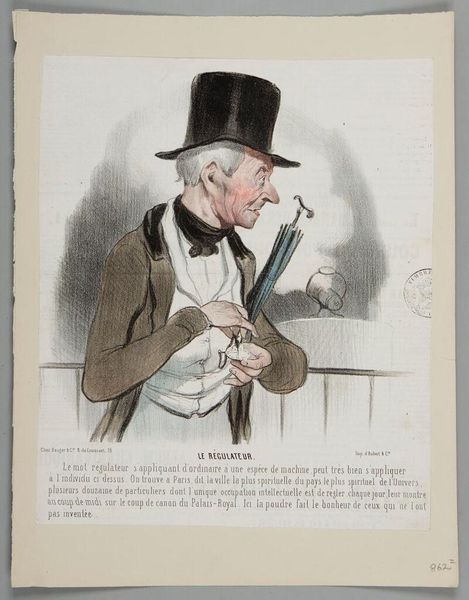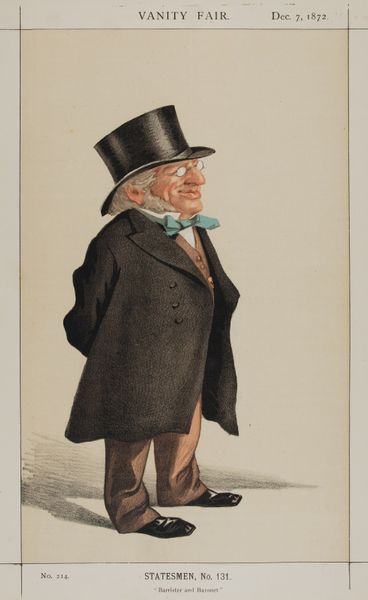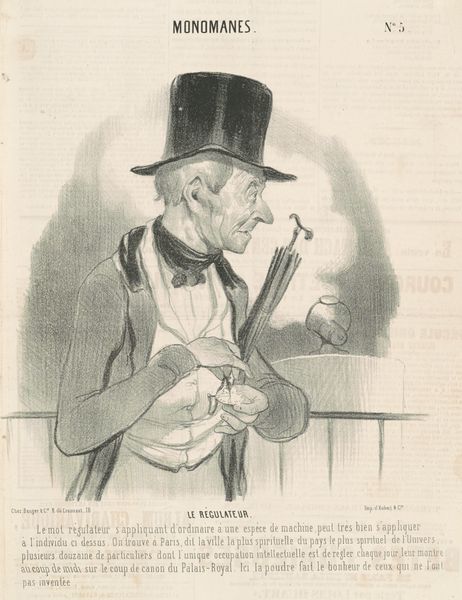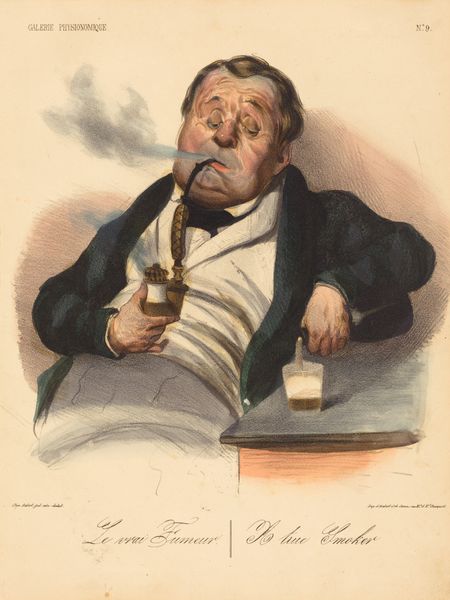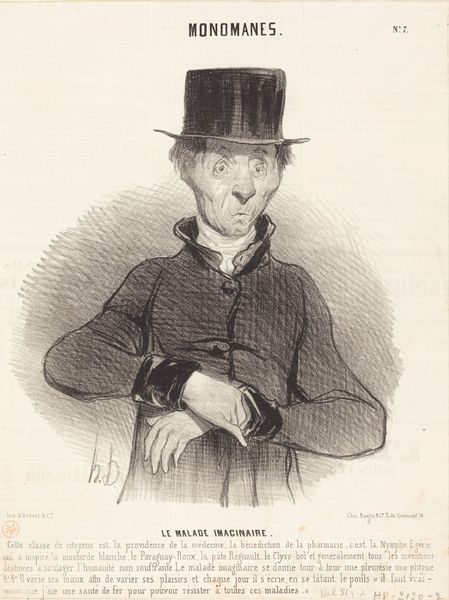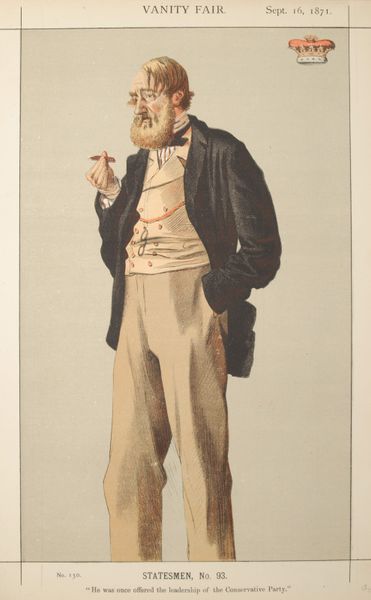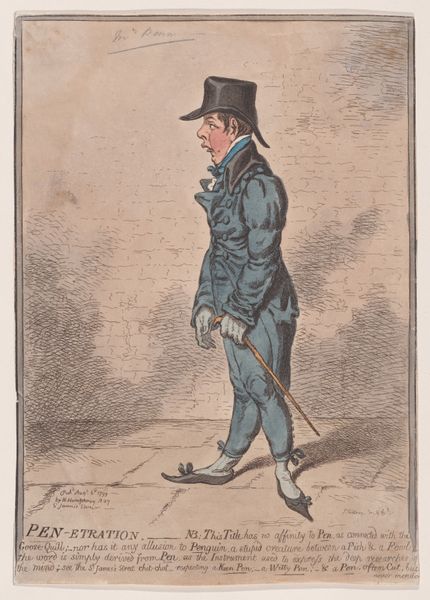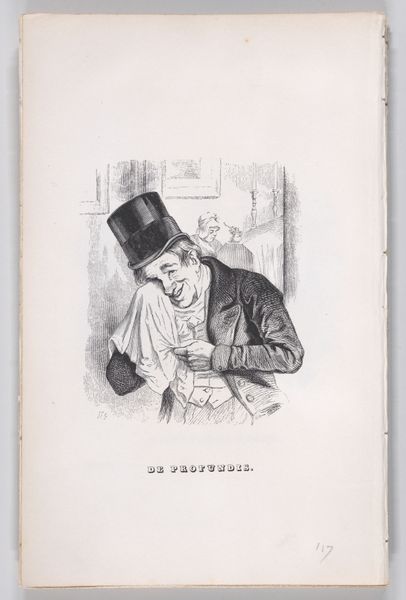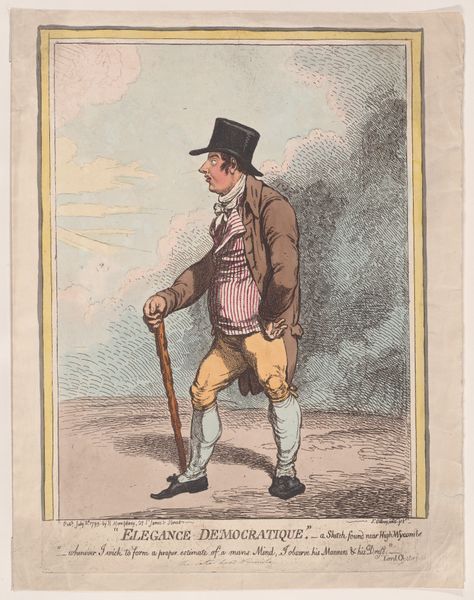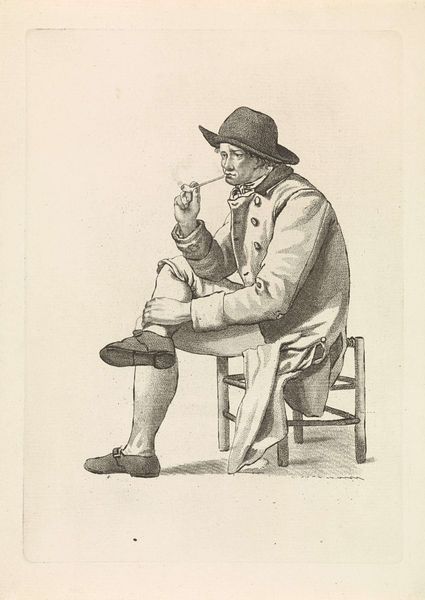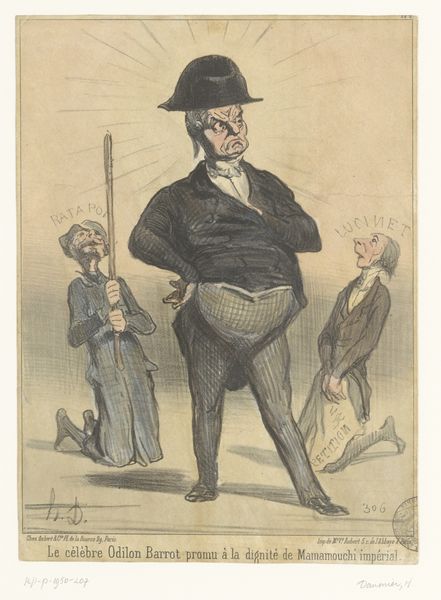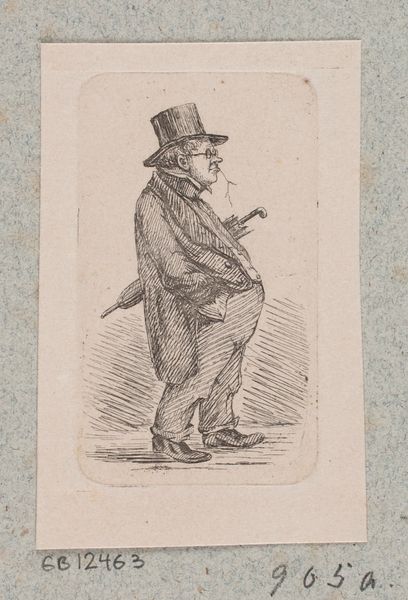
lithograph, print
#
portrait
#
lithograph
# print
#
caricature
#
romanticism
Copyright: National Gallery of Art: CC0 1.0
Curator: Daumier’s "La Bonne Prise," dating from 1836, immediately strikes me as a study in concentrated disdain. Editor: It certainly has a peculiar focus! I’m immediately drawn to the material elements: the lithograph medium itself and the subject’s attire. Look at the way his clothing is rendered. Curator: Absolutely. The lithograph as a medium offered a form of reproducibility, crucial in disseminating social critique, in this case a pointed one. His formal wear hints at a burgeoning bourgeoisie in France and his attitude reinforces social class caricatures. His clothing signifies his role in the 19th-century class system. The cane at his side is a symbolic form of labour exploitation through consumption, indicating the relationship between his wealth and that of others. The monocle hints to an over-simplification of a privileged lifestyle. Editor: The method of printmaking is important here. How the application of lithographic ink gives his waistcoat this almost tactile, soft quality and creates a tangible visual surface, the rendering suggesting luxury fabrics in line with the subject. The production, material, and cost all work together to form the full picture of the piece’s meaning. Curator: Right. His act of taking snuff also speaks to the performative aspects of class. Is he enjoying it? Or is it merely another symbol of privilege to display to those who deem otherwise of their lower class. Daumier challenges the elite's narrative, exposing its inherent superficiality and emptiness. This work really urges us to question normative frameworks of that time. Editor: It's fascinating to think about the raw materials used. From the Bavarian limestone used for the printing stone to the inks crafted from soot and oil, Daumier's choice highlights industrial processes influencing artistic creation. Curator: It’s an important point: what appears like satire of class structure then also questions modes of representation as a form of social construction, challenging established power structures and raising questions about identity, performance, and societal values of that time. Editor: The social, industrial and the economical elements all together in Daumier's creation of, "La Bonne Prise." A good moment, captured! Curator: I see it now as a confluence of art, ideology, and society which helps contextualize what it truly means to be human beyond mere economic and political factors.
Comments
No comments
Be the first to comment and join the conversation on the ultimate creative platform.
